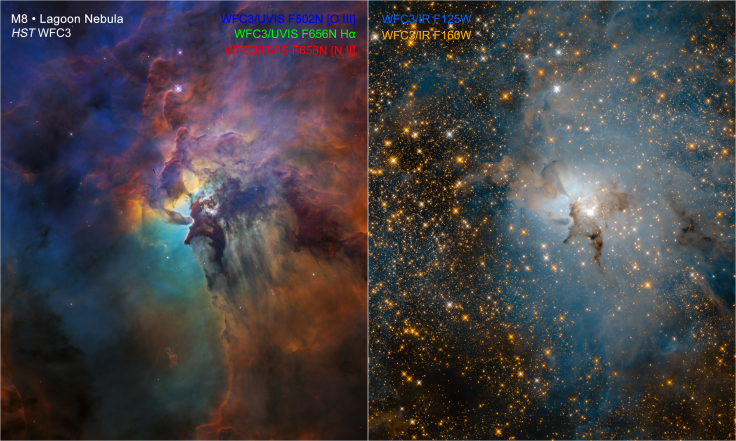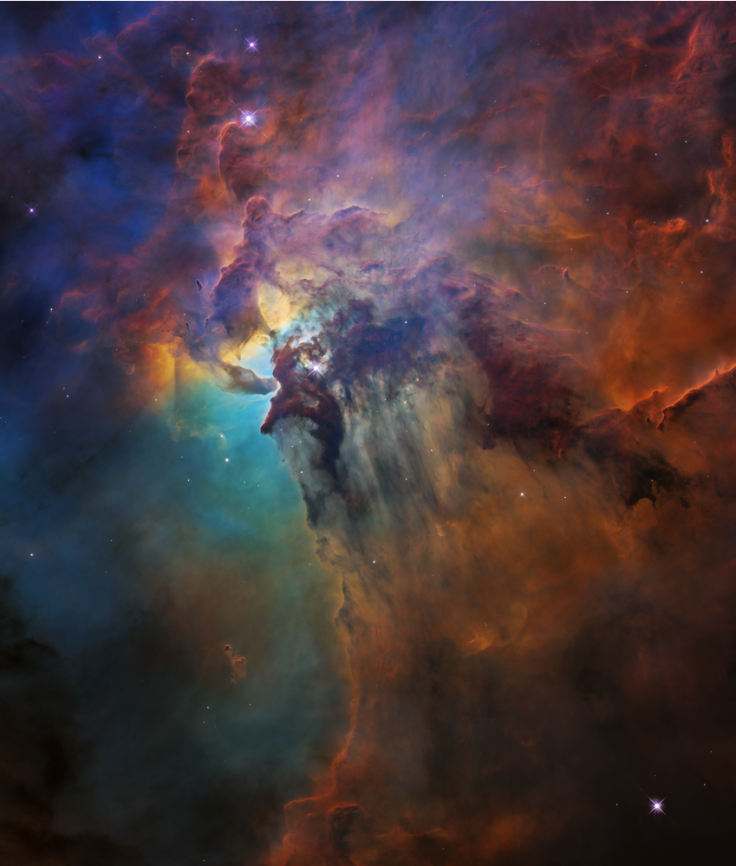Hubble Space Telescope Is Turning 28, Peers Inside Lagoon Nebula To Celebrate

Come Tuesday, and the Hubble Space Telescope would have spent 28 years in its place, hovering over Earth and observing distant space like no other telescope has done before or since. To celebrate the upcoming anniversary, the telescope’s operators — NASA and the European Space Agency (ESA) — turned Hubble toward the Lagoon Nebula and shared the stunning images captured.
Hubble peered deep inside the massive Lagoon Nebula, which is located 4,000 light-years away and measures 55 light-years across by 20 light-years tall, using instruments to capture it in both visible and infrared light. The nebula is so large, it can be seen with the naked eye on clear, dark nights, and appears three times bigger than the moon. So what you see in the Hubble images is only a small part of the nebula, its very heart that is about four light-years across.

ESA’s Hubble site described this visible light image: “This colourful cloud of glowing interstellar gas is just a tiny part of the Lagoon Nebula, a vast stellar nursery. This nebula is a region full of intense activity, with fierce winds from hot stars, swirling chimneys of gas, and energetic star formation all embedded within a hazy labyrinth of gas and dust.”
The Lagoon Nebula, like others, is a massive stellar nursery, or the birthplace of stars. The bright star peeking out from behind dark clouds in the center of the image is called Herschel 36. It is a gigantic star, about 32 times more massive than the sun, nine times its diameter, 40,000 times hotter and 200,000 times brighter. It is only about 1 million years old, and is expected to live in its current phase for another 5 million years, given its mass.
Stellar winds and ultraviolet radiation from Herschel 36 affects the region around it, twisting and shaping the surrounding clouds of gas and dust into spectacular forms. In time, some of those clouds will collapse under their own weight and would lead to the formation of new stars. These regions appear the darkest and densest in the image.

This infrared image of the same region of the Lagoon Nebula tells a very different story, looking as it does beyond the veil of clouds that obscure visible light. The very large number of stars seen in infrared, but missing from the visible-light image, are mostly located in the distant background, far behind the nebula itself. Some of the starlight, however, is from young stars within the nebula.
NASA’s James Webb Space Telescope (JWST) is the next generation successor to Hubble, but its launch has been delayed a few times already. Initially scheduled to be launched in 2007, JWST is currently set to go into space in 2020. It will be able to look inside the dense dusty clumps of Lagoon Nebula that Hubble’s view cannot penetrate.
Lagoon Nebula was observed numerous times before this, with the first Hubble images of it being captured in 1996 and released in January 1997. The two space agencies also released a video Thursday that zooms into the core of the stellar nursery.
© Copyright IBTimes 2025. All rights reserved.



















